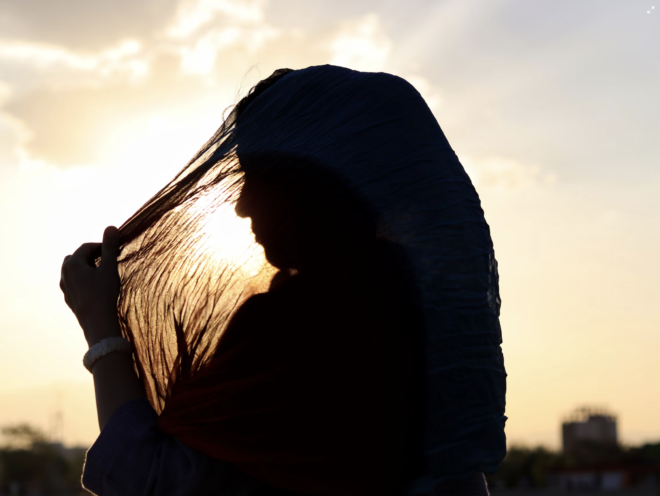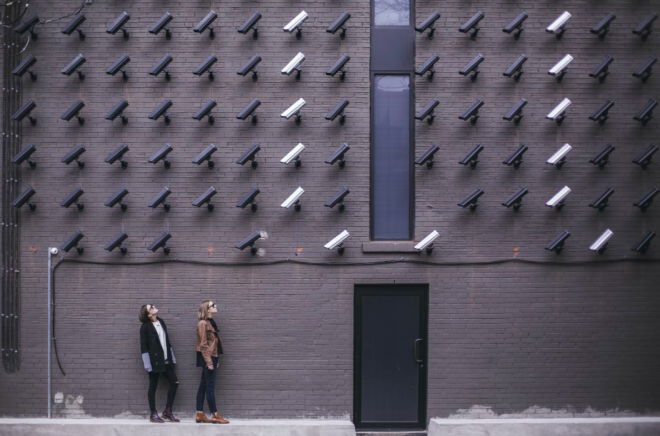Like China – using AI and surveillance cameras to pinpoint people breaking lockdown – Iran’s morality police are using technology to catch women without a head covering, the hijab. Going in public without a hijab is a moral sin in Iran.
The heavy-handed Islamic extremist government of Iran is insistent that women, whether they chose to practice the religion or not must have their heads covered by the hijab. Until now morality police stopped women on the street, with recent incursions resulting in violence (see videos below). Enforcement has stepped up and Iran is now using security cameras and facial recognition to ID violators.
Iran was once a thriving, liberal country in the Middle East and Tehran was often compared to being the Paris of the Middle East. An intolerant regime over the last 30 years has created an exodus of Iranians with the means to escape, and those without the means to live under an iron fist –– and now surveillance cameras.
What is the hijab?
In modern usage, hijab refers to headcoverings worn by Muslim women. While Islamic head coverings can come in many forms, hijab often specifically refers to a cloth wrapped around the head, neck and chest, covering the hair but leaving the face visible.
While some Muslim women chose to wear the hijab (read dispelling the hijab myth here) there are many who don’t. And not complying with the rule might land you a fine, in jail or worse.

Radio Free Europe says that authorities in Iran are planning a video surveillance campaign that will install cameras in public places such as subways and sidewalks.
Wearing a hijab in mandatory in Iran for women, even if you don’t define yourself as a Muslim. Zoroastrians, Christians, Jews and agnostic people live in Iran but the country has a bad history of persecuting other religions, its oldest religion especially.

In a video published on social media, Mohammad Saleh Hashemi Golpayegani said this new measure is based on the July 5 order by President Ebrahim Raisi to enforce the so-called hijab and chastity law. It is the first time that an official in Iran has publicly admitted the presence of facial recognition technology in public surveillance cameras.
Special security forces have been enforcing the law on the streets for decades.
At the top of Iran’s power structure is the Supreme Leader, Ayatollah Ali Khamenei, who succeeded Ayatollah Ruhollah Khomeini, the father of the Iranian Revolution, upon Khomeini’s death in 1989. Khomeini and Khamenei are the only two men to have held the office since the founding of the Islamic Republic in 1979.
After a video of a woman enforcing hijab rules quarreling with a female bus rider became viral, IRGC-affiliated Fars news said the hijab violator has been arrested.
— Iran International English (@IranIntl_En) July 17, 2022
The video started circulating on Saturday, a few days after Iranian women launched a campaign against hijab. pic.twitter.com/PVOgvAYSUs
Golpayegani is the secretary of Iran’s Headquarters for Enjoining Right and Forbidding Evil, which is responsible for determining and enforcing “proper” Muslim and Islamic models in society.
Golpayegani has previously said to the media that women who publish their pictures without a hijab on the Internet, on let’s say Instagram, will be deprived of some social rights for a period of six months to one year.
If you are judged to be non-compliant here’s what might happen to you: you won’t be able to enter government offices, you will be denied entry to banks, and you won’t be able to use public transportation.
VIDEO of women taping morality police
Women who don’t comply might also be “disappeared” and whisked away into vans. This is what has happened to the past to well-known bloggers we’ve interviewed like Hossein Derakhshan and to Faranak Farid who was beaten and tortured for trying to protect a disappearing salt lake, Lake Orumieh, in Iran.
Guidance Patrols, or the morality police in Iran are known for becoming increasingly active and violent. The head covering worn by Muslim women became compulsory in public for Iranian women and girls over the age of 9 after the 1979 Islamic Revolution.
Some “extreme” practices in Islam are also misunderstood. Read here from our Muslim writer about khitan, or circumcision in males and females.And if you missed the link earlier in the article, here is an op-ed we published that dispels the myth of the hijab as weakening women. The author of the article presents herself without a hijab.



